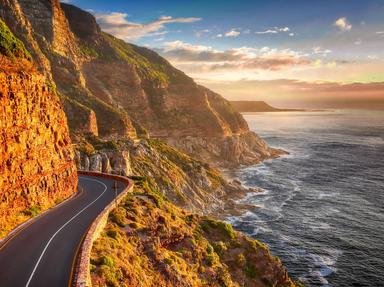Quiz Answer Key and Fun Facts
1. Cape Town is the second biggest city in South Africa after Johannesburg. Where in South Africa is it located?
2. It is thought that the Cape Town area was settled between 12000-15000 years ago, but little is known about this time. The European first reached the area in 1486. What nationality was this explorer?
3. In 1652 a port was established as a lay-over point for Dutch ships sailing for the Dutch East Indies but the settlement had a shortage of labour. Where were slaves were imported from?
4. With the Dutch republic becoming France's Batavian Republic soon after the French Revolution, Great Britain moved in on the Dutch colonies such as the Cape Colony. In what year did Britain capture Cape Town?
5. The discoveries of two important commodities close by to the Cape Colony in the mid to late 1800s dramatically increased the population of Cape Town. What were these two commodities?
6. Cape Town has a a distinct backdrop, of Table Mountain, a 3000 foot flat top mountain that sits behind the central city, with the suburbs spread around it. Flanked either side of Table Mountain are two other prominent features. What are these features called?
7. While Table Mountain dominates the backdrop to the city, there is another distinctive flattish hill between the coast and Table Mountain that the city has had to be built around. What is the name of this feature?
8. Cape Town was the provincial capital of Cape Colony which was one of four British colonies in 1910. In 1994 these provinces were dissolved and nine provinces were established. Cape Town retained its title as a provincial capital. What was the name of the new province?
9. What type of attraction is Kirstenbosch, which is known as the "Jewel in the crown of Cape Town"?
10. Tourism plays a large part of Cape Town's economy. Which one of these attractions does *NOT* feature as an important part of the city's tourism trade?
Source: Author
1nn1
This quiz was reviewed by FunTrivia editor
spanishliz before going online.
Any errors found in FunTrivia content are routinely corrected through our feedback system.

